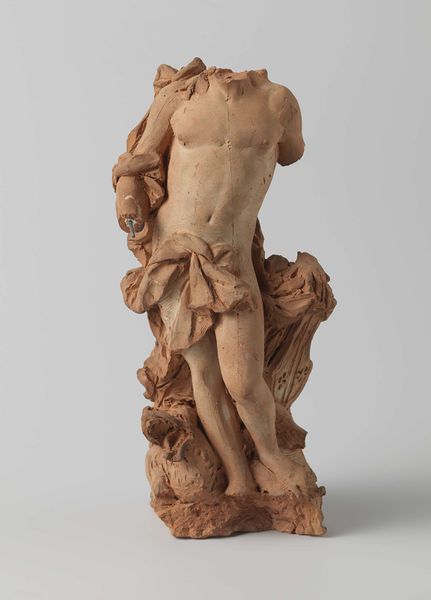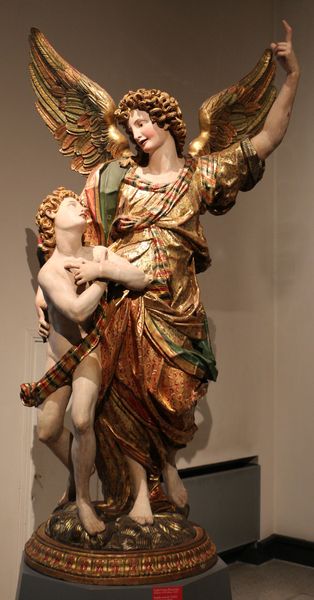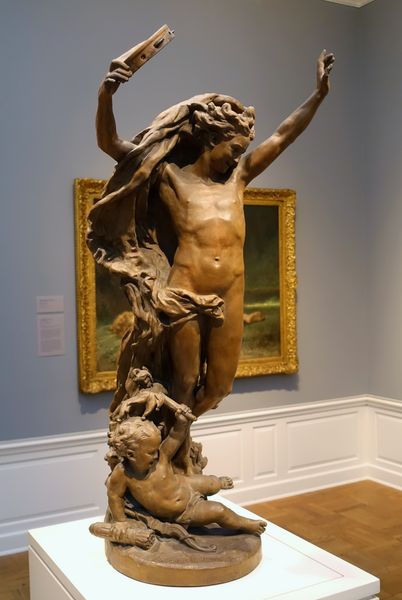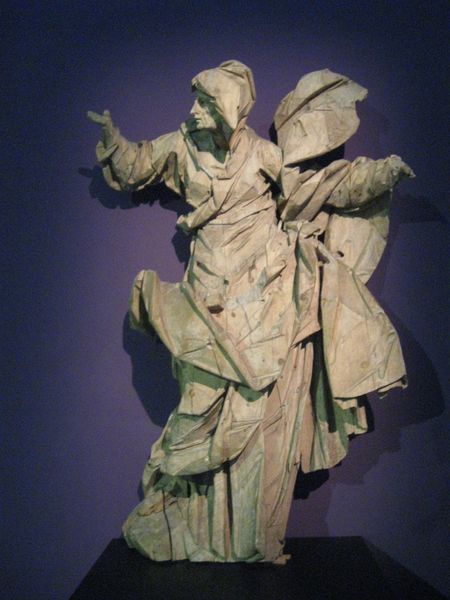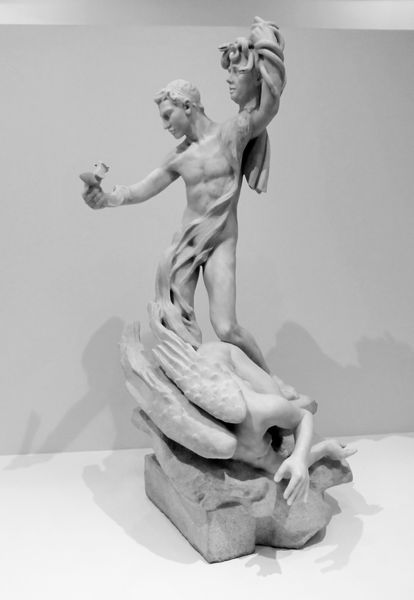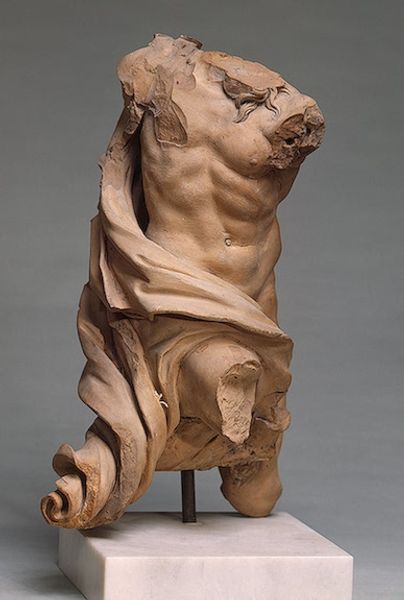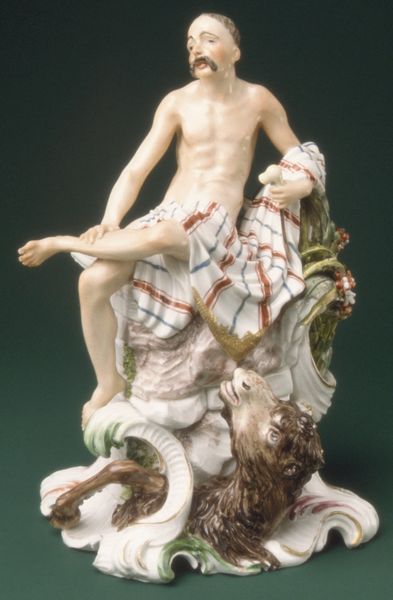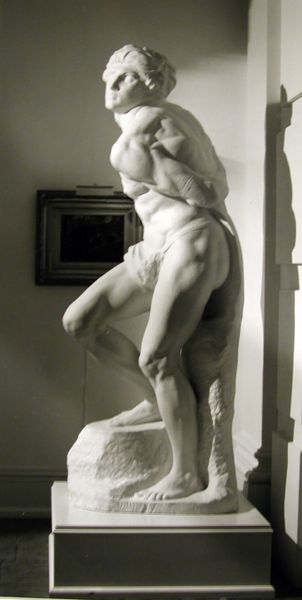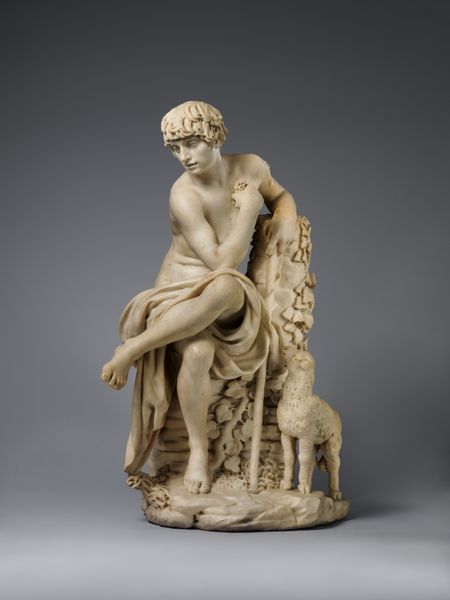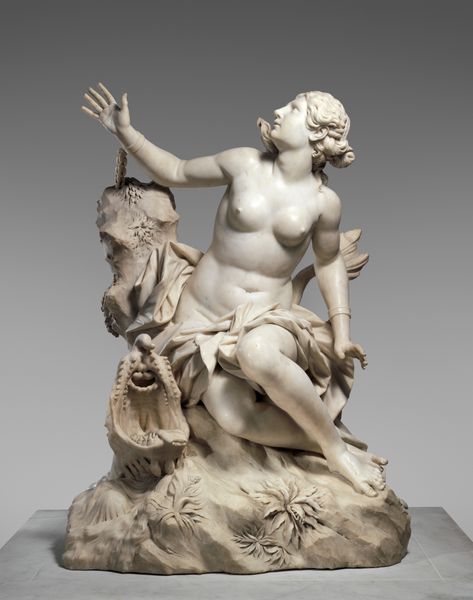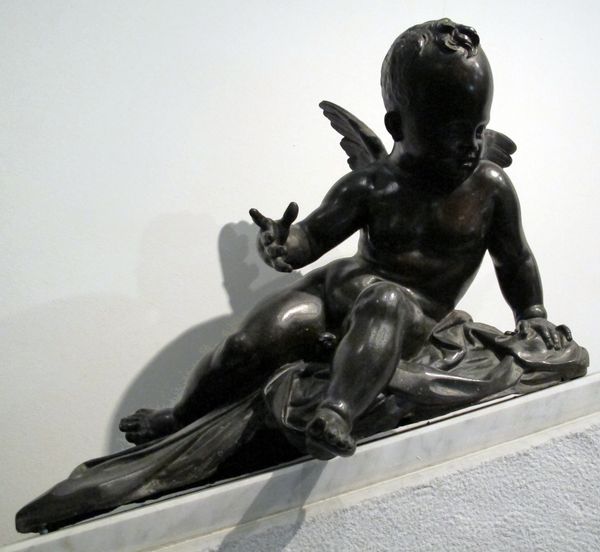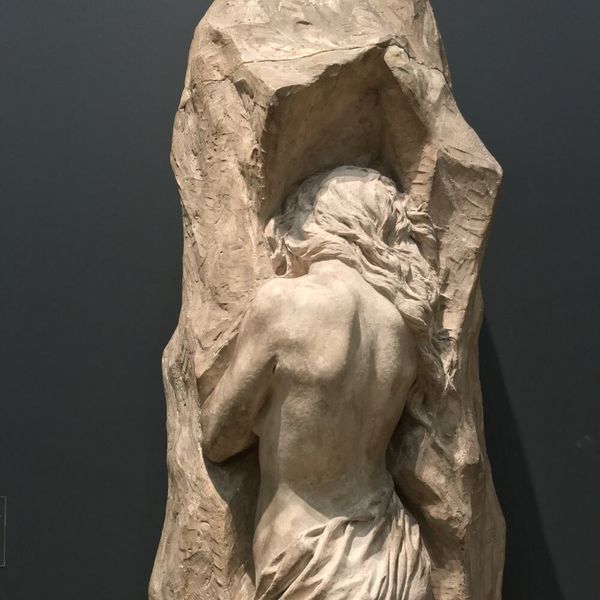
carving, sculpture, wood
#
portrait
#
carving
#
baroque
#
figuration
#
sculpture
#
christianity
#
wood
#
history-painting
Copyright: Public domain
Editor: We're looking at "St. John the Baptist," a wooden sculpture by Alonzo Cano from 1634. There's a lot of pathos in this figure – he looks almost like a vulnerable youth, despite the traditional imagery. What strikes you about it? Curator: Pathos indeed. Cano manages to intertwine the divine and the human, doesn't he? I’m drawn to the raw emotion in John’s face. His gaze seems to pierce through the ages. There’s a tension between the idealized beauty of the Baroque style and the very human, almost fragile quality of the figure. Notice the sheep—almost lost in folds and textures! Makes you wonder about our connection to nature, doesn’t it? Are we really listening, or just admiring from afar? Editor: I hadn't thought about the sheep that way! I was so focused on John’s expression. But that gilded cloak seems almost overwhelming compared to his bare chest and arms. What's that contrast saying, do you think? Curator: The Baroque, in a nutshell! It's about drama, it’s about contrast, light, and shadow playing to create that sense of divine theater. Here, perhaps it is commenting on the relationship between the Saint's worldly existence and spiritual purpose, which he expresses while sacrificing all worldly goods, just to follow his true beliefs. How do we manage that internal divide in our own lives? Are we adorning ourselves in things, distracting ourselves from what’s truly important? Editor: That gives me a lot to think about. Seeing the Baroque period from a much more intimate angle is really valuable. Curator: Precisely. Art speaks loudest when it echoes within us, challenging us, doesn't it? That little sheep definitely made an impact to the rest of us!
Comments
No comments
Be the first to comment and join the conversation on the ultimate creative platform.
